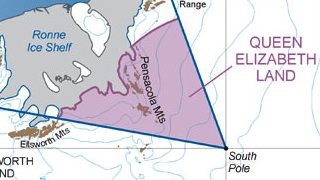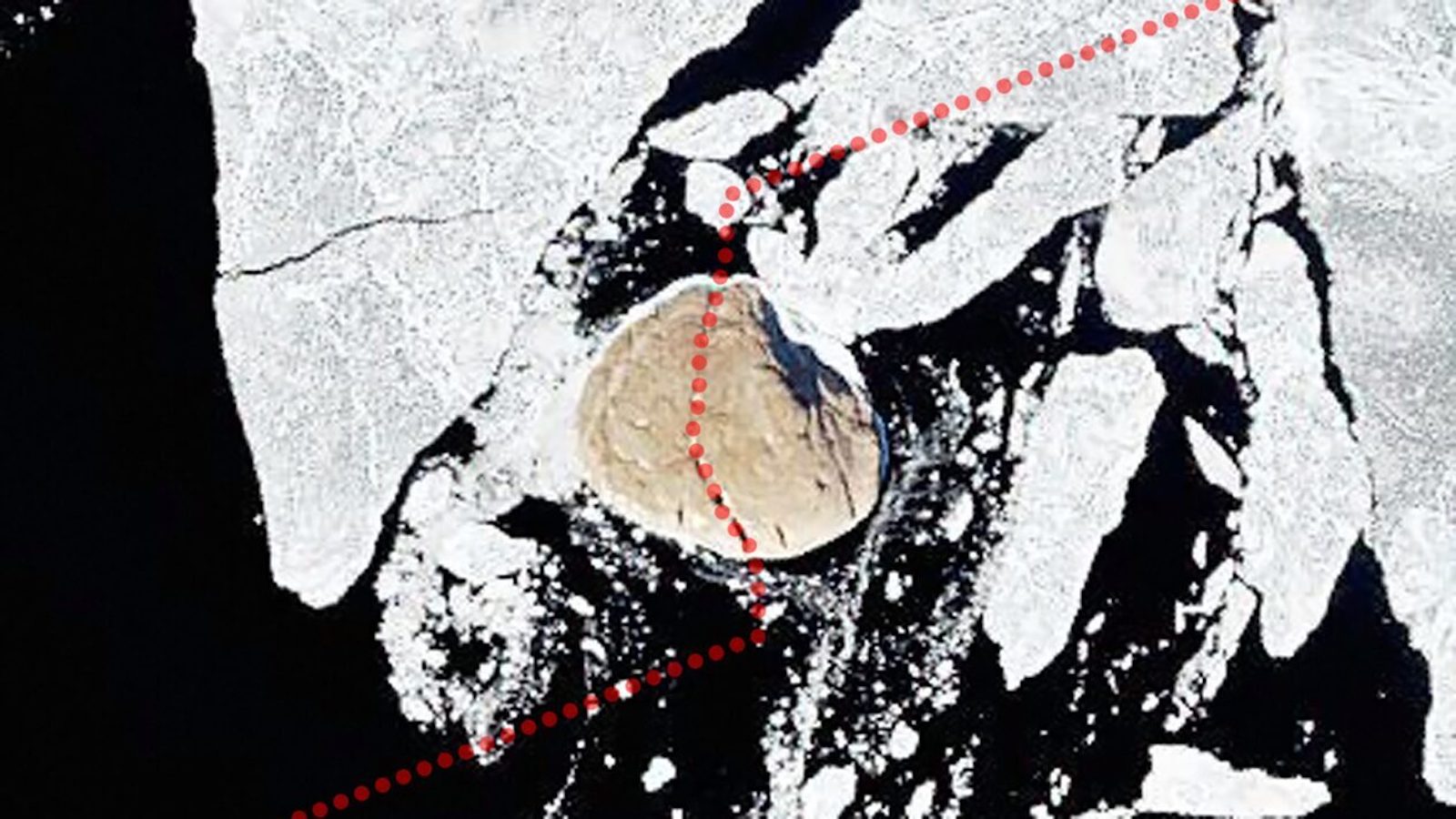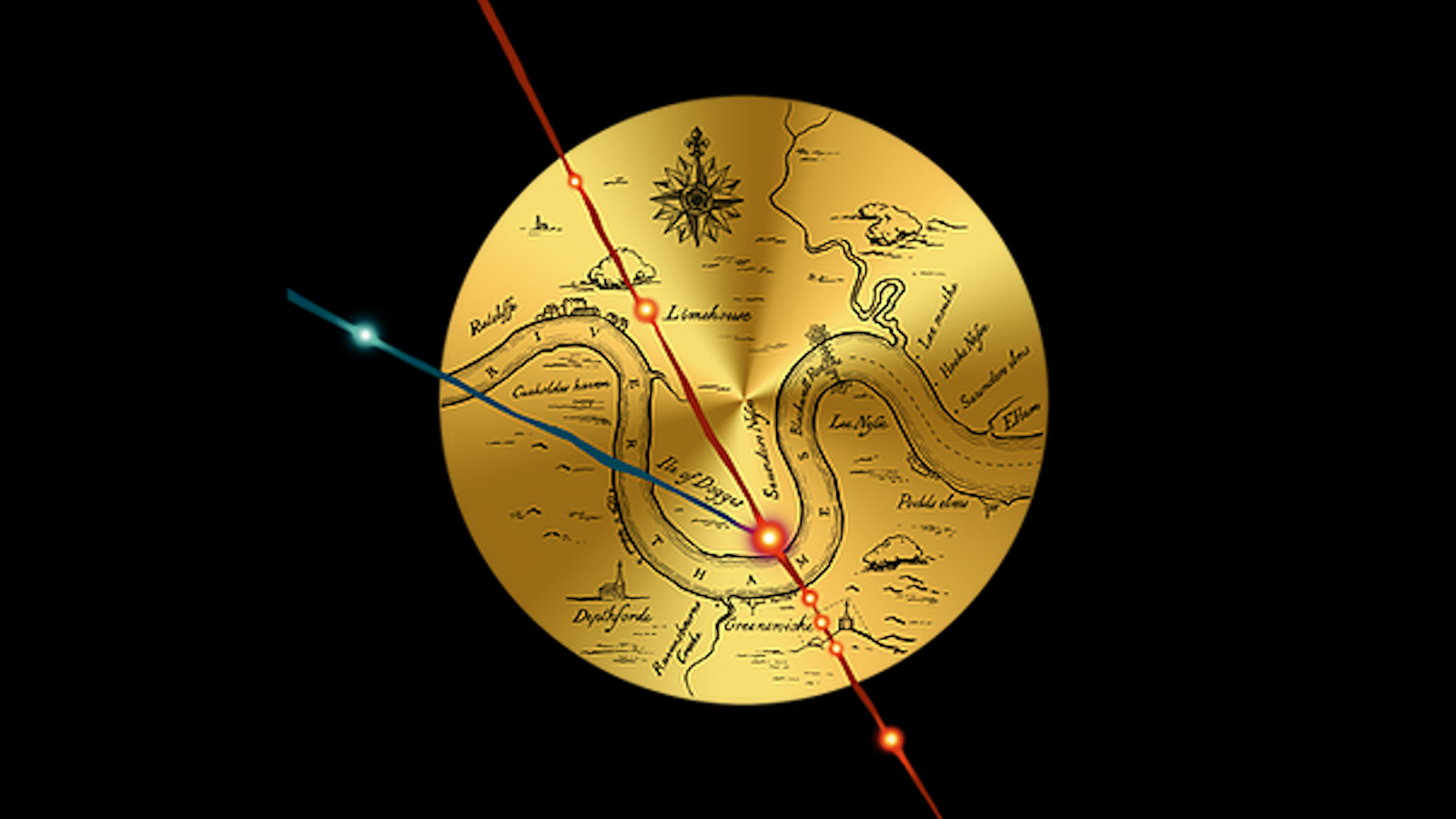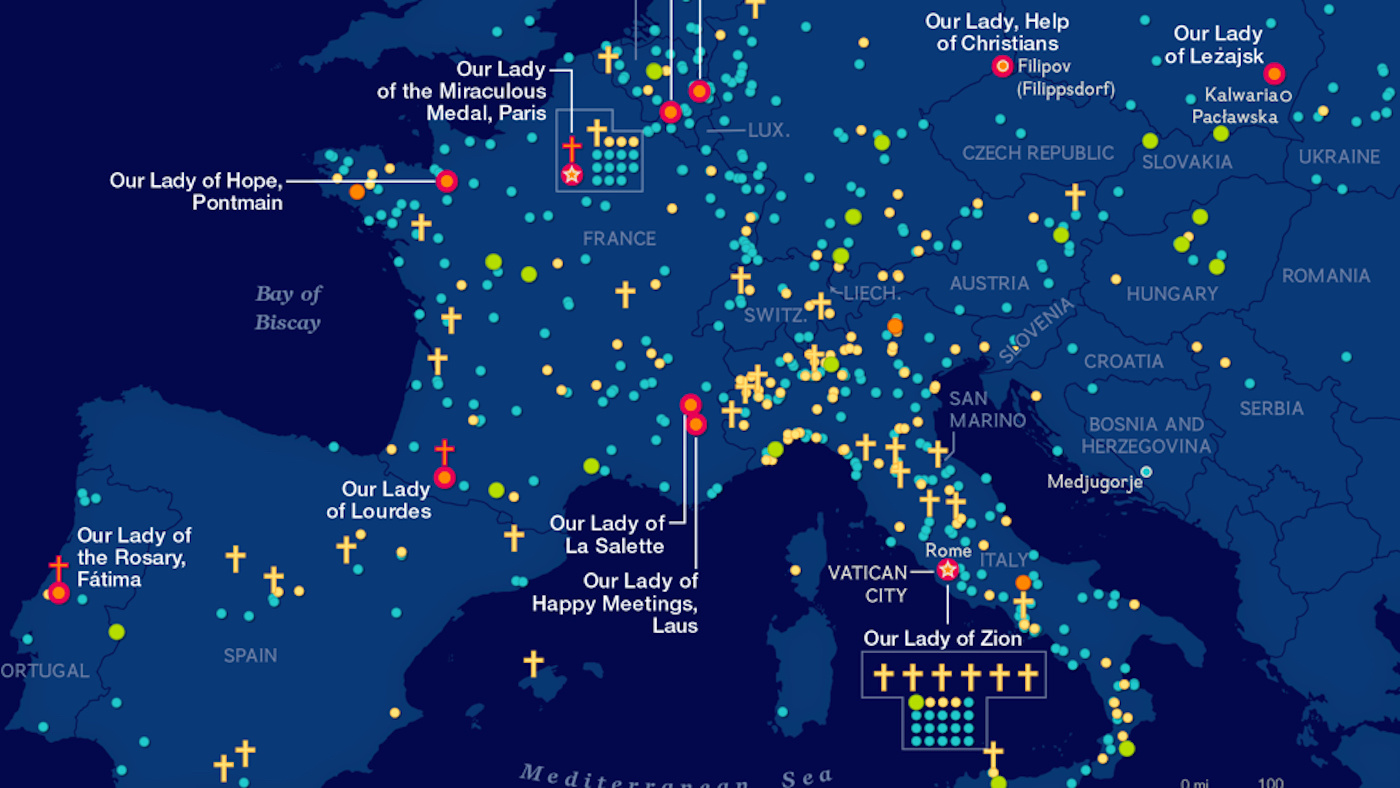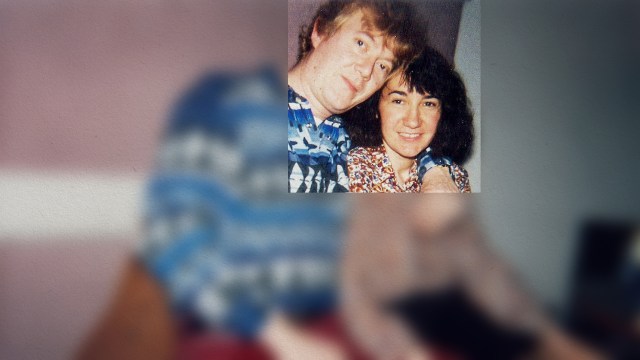What do King Charles III, the Pope, and Canadian Inuit have in common?
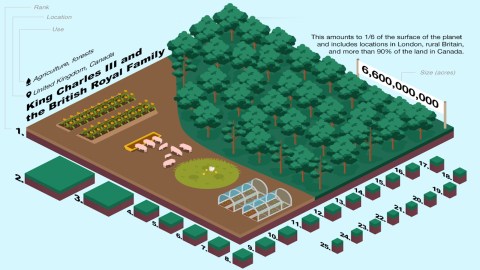
- The British Royal Family, headed by newly crowned King Charles III, owns 6.6 billion acres of land worldwide.
- That’s more than 37 times as much as the global runner-up, the Catholic Church.
- Most of the top 25 largest private landowners are Australian cattle farms, but they’re outdone by the Inuit of Canada.
Old McDonald had a farm. The company managed by his descendants is now the 14th-largest private landowner in the world. Hold your ee-i-ee-i-o’s: This is not the farmer of nursery rhyme fame. That apocryphal MacDonald probably was inserted into a traditional folk song in early 20th-century America. These McDonalds (without the interstital -a-) have been farming in Australia since 1827, when the first cattle were shipped to Tasmania.
A cattle empire
In 1947, Jim McDonald purchased Brightlands Station, a vast ranch in the state of Queensland. In the decades since, the family has kept adding land nearby to “drought-proof” their cattle operation.
After 7 generations and 190 years, the McDonald family estate, now operating as MDH Proprietary Limited, owns 150,000 head of cattle across 14 properties in Australia’s vast Outback. It is one of the country’s largest beef cattle operations. In fact, its combined area of 8.3 million acres (12,972 sq mi or 33,597 sq km) makes it about the same size as Maryland or Belgium.
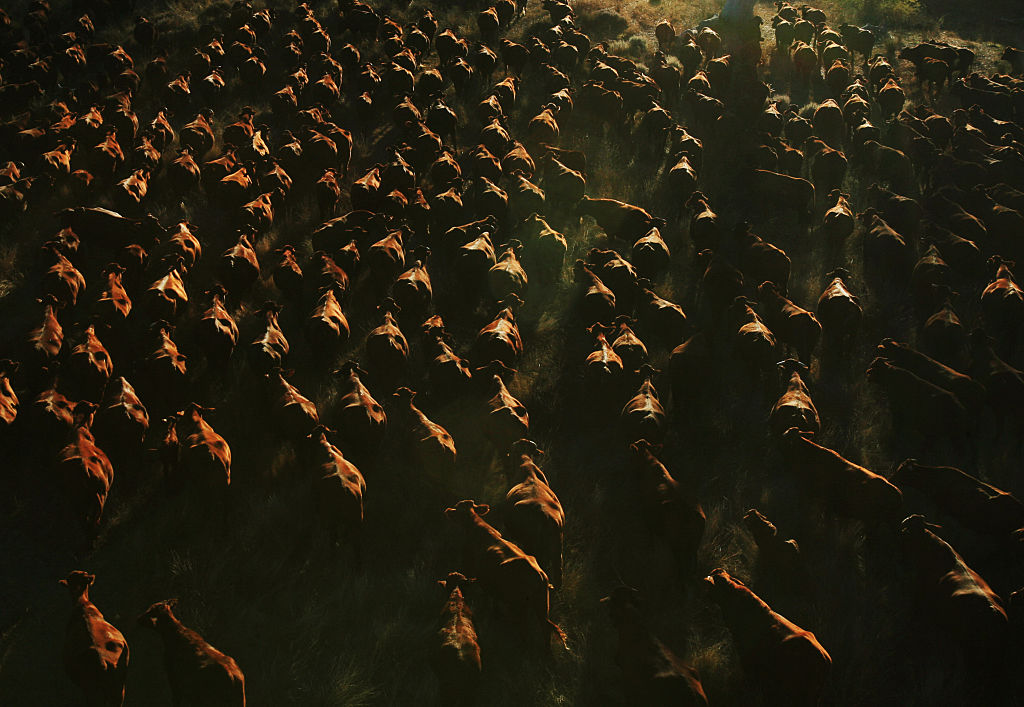
A cattle farm that’s as large as an entire sovereign nation is not a rarity in Australia, home to some of the world’s largest agricultural enterprises — in area as well as turnover. MDH may be the 14th-largest landowner in the world, but within Australia itself, the conglomerate formerly known as McDonald’s farm is still smaller in area than seven other mega-farms and one mega-mine. Of the global top 25 largest landowners in the world, 16 are located entirely and two more partly in Australia.
So says a new report by Madison Trust, which lists the world’s largest private landowners.
Also majority owner of Tottenham Hotspur
As that report’s overview shows, MDH doesn’t hold a candle to Australia’s oldest and largest farming conglomerate. Beef-focused like MDH, the Australian Agricultural Company (AA Co) manages 17.3 million acres (about 27,000 sq mi, or 70,000 sq km), which is about 1% of Australia’s entire land mass. That is considerably bigger than West Virginia, and almost exactly the size of the Republic of Ireland.
AA Co, the 7th-largest private landowner in the world, is now majority-owned by UK billionaire Joe Lewis, who grew his stake in the company to more than 50% in September 2022. Lewis, who is the 39th-richest person in Britain, is also the majority owner of soccer club Tottenham Hotspur.
Mr Lewis can’t claim to own the world’s largest farm, however. That distinction goes to the Mudanjiang City Mega Farm in northwestern China, close to the Russian border. Its 22.2 million acres (about 35,750 sq mi, or 80,000 sq km) mean it’s slightly bigger than Maine, and almost as big as Austria.

The farm has about 100,000 head of dairy cattle, which is 50 times as many as the largest European dairy farmers. It was set up in 2015 to serve the Russian market, following the imposition of EU sanctions on Russia due to the annexation of Crimea. The Russians should be okay for milk at least: The farm produces 800 million liters per year.
Australia’s largest company
Still, Mr Lewis is not the largest private landowner in Australia. That prize goes to mining magnate Gina Rinehart, who owns large chunks of both her own country and the U.S.
In 1992, Rinehart inherited Hancock Prospecting from her father, and managed to turn the bankrupt mining company into a flourishing business that became Australia’s largest company and one of the world’s largest mining companies. Rinehart herself is Australia’s wealthiest person, and in 2012 was the world’s richest woman (now merely the 9th richest, with a net worth of $23.5 billion). In all, she owns just under 24 million acres of land (37,450 sq mi, or about 97,000 sq km). That’s a larger area than Indiana or Portugal.
Land, water, and ice
Still, that’s a far cry from the lands held collectively by the Inuit People of Nunavut, Canada’s largest and northernmost territory. Appropriately, Nunavut means “Our Land” in Inuktitut, the language of the Native Inuit people. The area was officially separated from the Northwest Territories in 1999, also making it Canada’s newest top-level administrative subdivision.
A few years earlier, the Canadian government granted large parts of the territory to the locals via the Nunavut Land Claims Agreement of 1993. This amounted to 87.5 million acres (about 136,720 sq mi, or 354,000 sq km), which is about halfway between the sizes of New Mexico and Montana, or roughly one Germany. That makes them the third-largest private landowners in the world.
Another Inuit area ranks number five globally. This is land held collectively by the Native people in the Inuvialuit Settlement Region (ISR) in the northern parts of Yukon and the Northwest Territories. At 22.5 million acres (35,150 sq mi, or 91,000 sq km), those lands are slightly bigger than that Chinese mega-farm.
The ISR is one of the four Inuit regions of Canada. Together with Nunavut, Nunatsiavut (in Labrador) and Nunavik (in Québec), it forms the homeland of the Inuit, collectively known as Inuit Nunangat (“the land, water, and ice of the Inuit”).
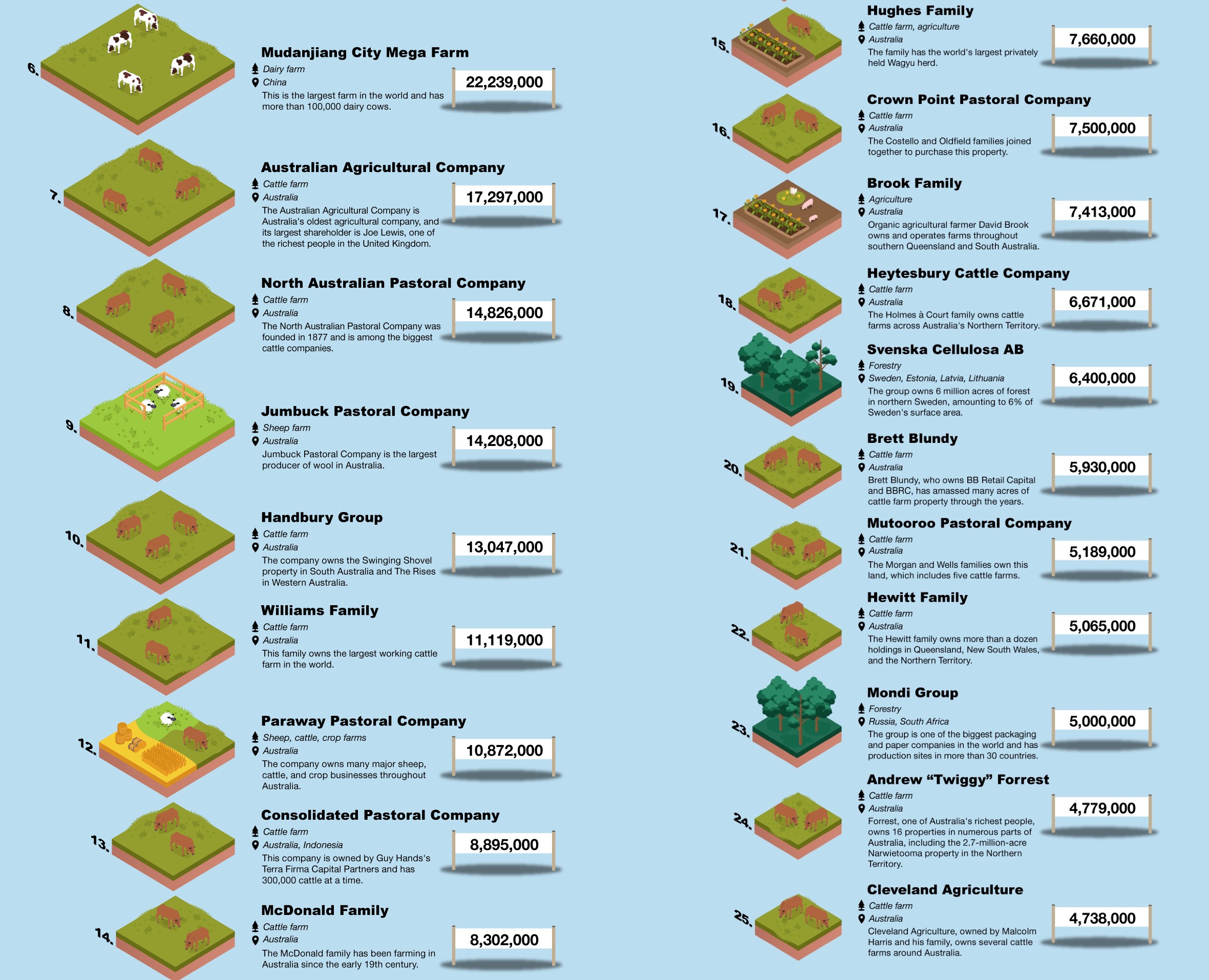
The Catholic empire
The Pope is the ruler of the world’s smallest state, the Vatican. But the Catholic Church which he leads, is not just the largest single religious denomination on Earth (with approximately 1.3 billion members), but also the second-largest private landowner in the world, thanks to the numerous churches, convents, abbeys, schools, and other types of real estate it owns all across the map. Estimates are that the church owns about 177 million acres of land globally (around 277,000 sq mi, or 716,000 sq km). That’s bigger than Texas, and twice the size of Germany.
The British empire — but mostly in name only
Yet even that is small beer compared to the world’s largest private landowner, the holdings of which are more than 37 times larger than those of the Catholic Church. This is the British Royal Family, headed by King Charles III. The Windsors own more than 6.6 billion acres around the world. That’s 10.3 million sq mi (26.7 million sq km), or more than three times the size of Brazil. It constitutes more than one-sixth of the planet’s land area. (29% of the Earth’s surface is dry land, which amounts to around 36 billion acres, 57 million sq mi, or 146 million sq km).
Is that even possible? Did the researchers misplace a decimal point?
Well, the figure is often repeated, but apart from whether it’s the correct figure, the question of ownership is a bit abstract. As sovereign of Great Britain and Northern Ireland, and several other countries in the Commonwealth (including Canada, Australia, and New Zealand, to name the biggest ones), King Charles “technically” has ownership of the realms over which he rules, either entirely or in part. Across the board, that notion of ownership is so passé and unenforceable as to be merely symbolic.
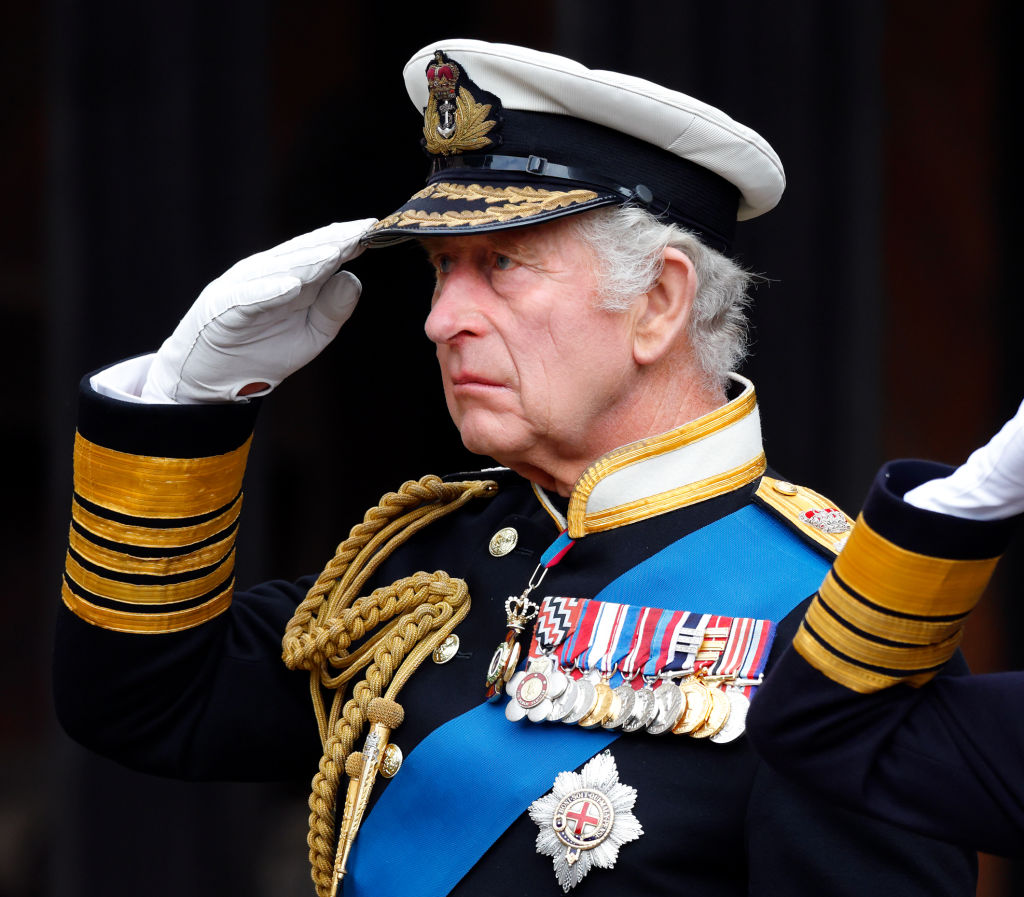
For example, about 89% of Canada is “crown land.” To be exact, 41% is federal crown land and 48% is provincial crown land. This is however considered public land, distinct from the monarch’s private estate. Considering those numbers, there is bound to be some overlap between the Canadian territories counted as “owned” by King Charles, and those under control of the Inuit.
There is, however, also something called the Crown Estate, a real estate portfolio in the UK that is theoretically owned by the British monarch, but not part of his private estate. Neither is it government property, although most of the revenue goes into the British Treasury. The King gets 25% of the Crown Estate’s annual surplus as a “sovereign grant,” although that does temporarily include 10% specifically earmarked for the refurbishment of Buckingham Palace. The current grant is around £86 ($109) million per year.
The Crown Estate covers properties from the charmingly arcane to the blandly commercial:
- Approximately 55% of the UK’s foreshore (beaches), but not in the Orkney and Shetland islands.
- Virtualy all of the UK’s territorial seabed (from mean low water to the 12-nautical-mile limit).
- 241 commercial, residential, and office properties in central London, including the Apple store on Regent Street.
- Full ownership of a shopping center in Worcester, and a 50% stake in shopping centers in Oxford and Exeter. Plus more than a dozen other retail and shopping venues.
Additionally, via the Duchy of Lancaster and the Duchy of Cornwall, the Royal Family has direct control over vast real estate holdings (and their incomes) throughout rural England and Wales, but also (via the Duchy of Lancaster) over the prestigious Savoy Hotel in London.
Even if King Charles might not actually own one-sixth of the planet’s dry land, with Buckingham Palace in central London and Windsor Castle just outside, plus various other residences throughout the entire United Kingdom, he does have plenty of choice about where to lay his hat at the end of the day.
Strange Maps #1210
Got a strange map? Let me know at [email protected].
Follow Strange Maps on Twitter and Facebook.
